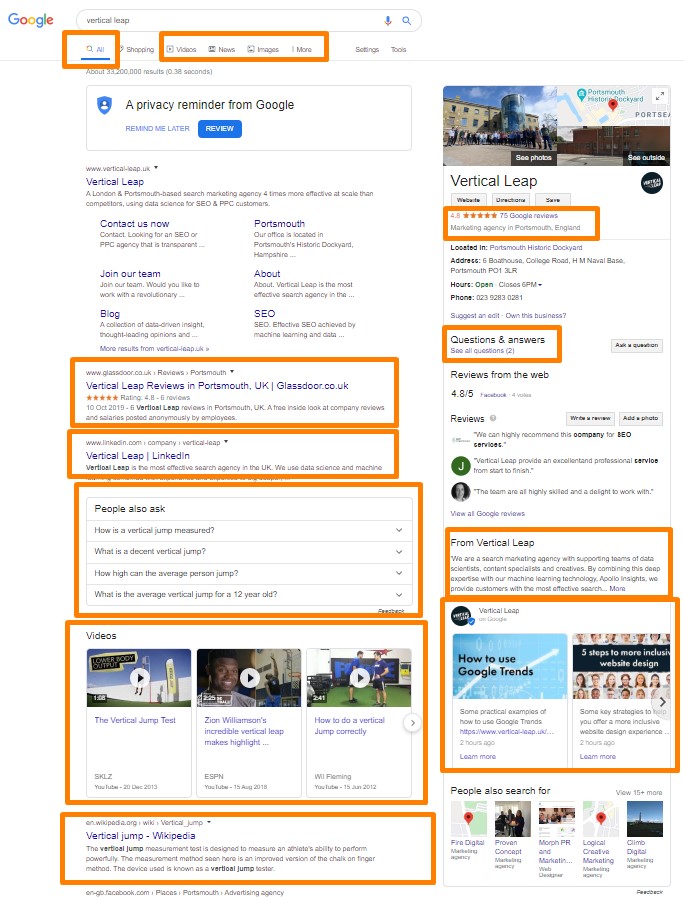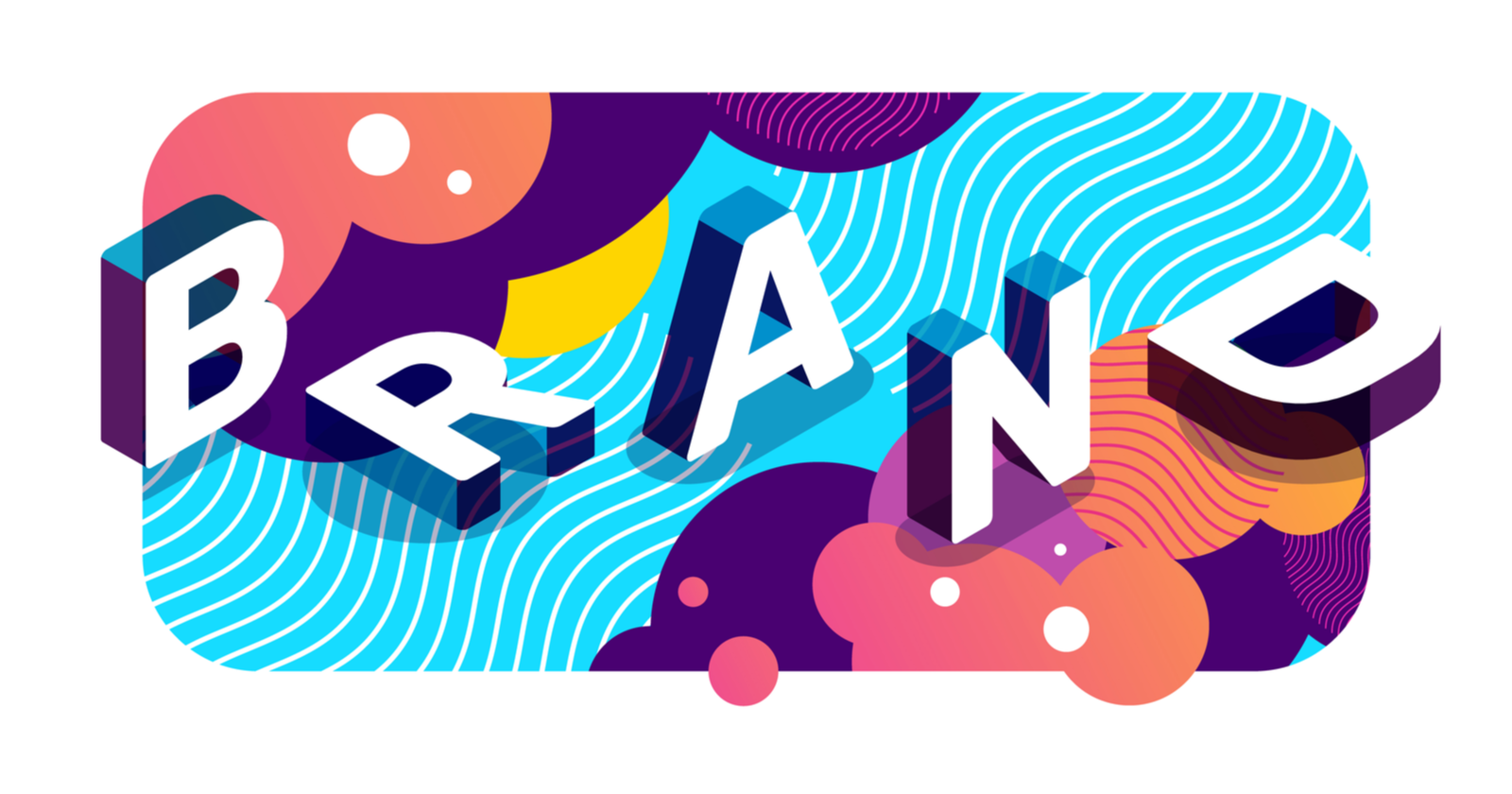Protecting your online brand is more challenging now more than ever.
Companies can often find it problematic to create a genuine digital brand identity.
The growth of social media influencers’ impact on reputation management combined with the impact of third-party and search engine owned review sites, weighs much of the control of brand perceived value and sentiment outside of the traditional brand website.
Competing as a brand on hyperlocal, local, national and international arenas increases the complexities of consistent and robust brand management online.
That said, there are always reliable tactics to deploy proactively to strengthen your brand online – five of these tactics are the focus of this post.
1. Making the Most of In-SERP Features
Google is a big fan of universal search results.
Also, know as enhanced and blended results, these are effectively where Google brings into the search result pages a mixture of content types and features.
Examples include video and image content, Google My Business (GMB), and related features such as Google Answers and more.
All of these items represent a fantastic opportunity to position your brand within extra segments inside of the search result pages.
Added to this, the mixed content types and in-SERP features tend to rank prominently on the first page of results the key area where you want to maximize your brand exposure.
When typing in a brand name (the example screenshot below based on the company I work with – Vertical Leap), it becomes clear what these practical opportunities look like.
In this case, it includes:
- Video, news, images and related search vertical targeting.
- GMB profile expansion including; GMB Post feature, reviews, company information, question and answers, profile completeness, and more.
- Third-party review site placement and ongoing optimization.
- Business social media site inclusion.
- Video content carousel.
- ‘People also ask’ Google Answers rich result / in-SERP feature.
- Wikipedia ranking result.
- And more.

2. Introducing the Brand to Wider Conversations
When it comes to brand protection and management, frequently the brand is a party to a fraction of the important conversations happening online.
There are numerous layers of brand conversations which a business should be continually monitoring, aware of and actively participating in.
An example of this in action is a PCB company with an ecommerce store. The typical layers that the brand can become visible and dominant within include:
- Product level: Reviews, updates, suppliers.
- Trade level: Events, exhibitions, quality control, future features.
- Company level: Sustainability, environmental, culture.
- Staff level: Expertise, guides, white papers, research.
- Consumer-level: Practical videos, problem-solving, support.
- Community-level: PR, company changes, insights.
Social listening plays an important practical part with this, as does the ability to leverage key staff and business expertise to the greater value of the wider audience and community, both online and offline.
As a company, part of your content creation process should include the repeated building of audience-aware content hubs that:
- Represent the functional layers of the business.
- Factor in the pillars of the brand that reflects the company culture, mission statement, and staff.
3. Integrating SEO, Social & Paid Brand Marketing
Elements of brand visibility are ringfenced into search verticals such as paid, organic, and social media marketing.
It is important that you are present in all of them.
Paid brand bidding is cheap to do (as quality score is naturally very high and costs per clicks low) and it maximizes the retail space in the search engine results pages reserved for paid advertising.
Likewise paid and organic social media marketing can be a cost-effective means to expand and access your audience.
This can increase the value from all your content created, and produce consistent and reliable conversations with influencers operating non-competitively inside your digital niches.
Done correctly, the intertwined working between these marketing channels can deliver a multiplier effect and increase the combined value outside that of the component parts.
Often this is due to gains made with recombining data sets, aligning strategies, and using each medium to overcome the challenges and barriers of another – for example, using SEO to target non-feasible PPC terms.
4. Building the Brand With Content
Content is the consistent element that joints all of the tactics mentioned in this post, and warrants dedicated focus.
Brand building content has a specific purpose and intent outside of the supporting role that content plays in other tactics discussed.
Here is a useful guide to creating brand content if this is something new to your business.
There are some important considerations when it comes to building the brand with content such as:
- Using your own unique data sets to build meaningful content items that cannot be easily replicated elsewhere.
- Leverage your company expertise and people’s personal professional statuses to showcase the brand by reflecting your brand culture.
- Reinforce the nuances, brand/service/product/solution differentiators.
- Source credible non-competing influencers to bring the brand in front on new and relevant audiences in a way that suits them.
5. Always Remember the Story
Storification brings faces to brands, reinforcing a myriad of supporting real-world context to products and solutions, plus supporting wider value proposition reinforcement.
Adding a story to a service helps gain trust and social engagement, as well as build genuine brand loyalty.
These stories are frequently more visual-based and in the form of:
- Testimonials.
- Case studies.
- “Day in the life of” staff stories.
- And more.
Storytelling can help bring products to life and add clarity towards the intended value and purpose of any product or service.
People are looking to digest content in more visual ways plus the shareability of content increases substantially once the text is replaced with visual triggers.
Once you match a true understanding of your audience with a story that reflects their wants, needs, and pain points, you enable your brand to build a more powerful relationship.
It is this relationship that increases the impact of content and the robustness of the brand to external reputational threats.
Summary
In this post, I shared five of my key brand protection and building tactics that repeatedly work.
These can be summarized as:
- In-SERP feature targeting and optimization.
- Being more present in online conversations related to the brand.
- Integrating SEO, PPC, and social media.
- Using content for dedicated brand-building goals.
- Leveraging the value of storification.
More Resources:
- 7 Expert Tips to Protect Your Online Reputation
- How to Build Your Brand’s Authority with Strategic Content & SEO
- 4 Ways You Can Create a More Memorable & Appealing Brand
Image Credits
Screenshot taken by author, March 2020





